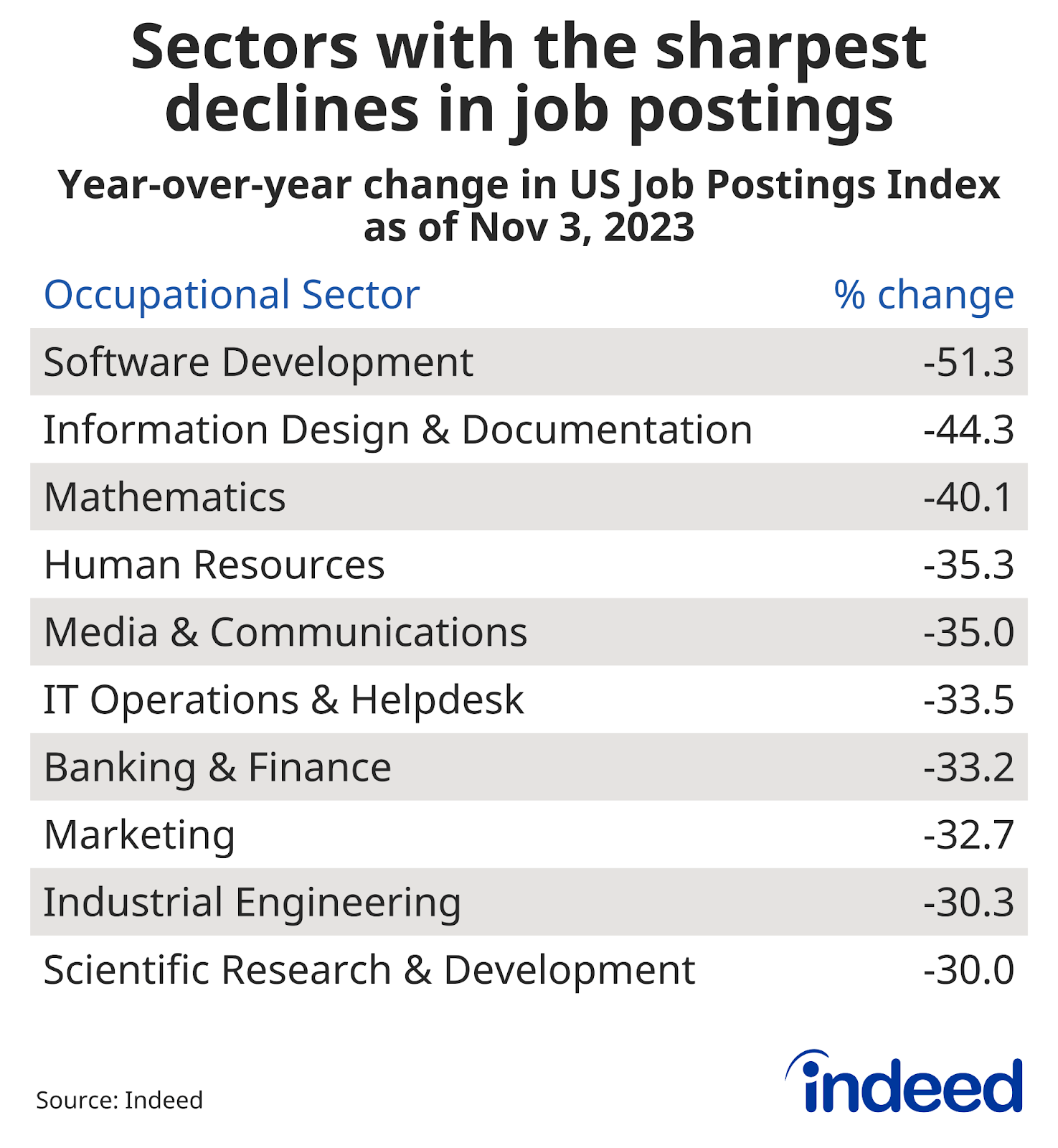Indeed recently released their 2024 US Jobs & Hiring Trends Report, which provides insights into the hiring stats across many sectors, and how many job postings are being made in each sector.
Key findings:
- The labor market outlook for next year hinges on worker demand and whether any downturns stem from reduced hiring rather than increased layoffs.
- A tight labor market and high immigration could draw more prime-age workers, but this may not counteract the impact of an aging population indefinitely.
- Worker resignation rates have decreased compared to recent years, yet job-switching remains high historically.
- Wage growth appears to be reverting to pre-pandemic levels, but the timeline and its correlation with inflation are uncertain.
The labor market deviated from the anticipated “Great Resignation” trajectory this year, much to everyone’s relief. Despite predictions of a recession, rapid tightening of monetary policy by the Federal Reserve, a banking crisis, and geopolitical uncertainties, the labor market has remained resilient. However, reaching this point has required some unexpected developments.
While job openings and postings decreased significantly, layoffs remained low. The labor force saw an influx of workers returning, and employers continued to hire at a steady pace, albeit with slower wage growth. The initial wave of the “Great Resignation” that characterized the early post-pandemic period subsided, but workers still felt comfortable leaving their jobs.
Job Postings On The Decline
Employers are not looking for as many workers as they were a few years ago. The Indeed Job Postings Index has dropped by 22.5% since the end of December 2021. Also, the number of job openings reported by the federal government has fallen by 20.6% since its highest point in March 2022, as of September. These numbers have gone down partly because employers have filled a lot of jobs. By October, the total number of people with jobs was 3% higher than before the pandemic started in February 2020.


Employers are reevaluating their staffing strategies due to a trio of economic pressures: decelerated growth, changing consumer demands, and escalating interest rates. This reassessment has led to a noticeable decline in job postings, particularly in sectors that were once soaring, such as technology. Here, plummeting stock values have brought hiring practices back down to more grounded levels.
Contrastingly, industries offering face-to-face services — like restaurants, hotels, and healthcare facilities — continue to exhibit strong hiring activity. It’s a vibrant spot in the labor market landscape.
Wage Growth Has Slowed
Wage growth has been slowing down and might soon be back to the rate it was before the pandemic. The Indeed Wage Tracker shows that wages in October went up by 4.2% from last year, which is less than the 4.8% increase in July, and much lower than the high of 9.3% in January 2022. If this slowing continues like it has for the last three months, wages could return to the pre-pandemic growth rate by the middle of next year.

Preparing For 2024
In anticipation of 2024 and beyond, it’s prudent for businesses to strategize and secure their workforce needs. Partnering with MGR Workforce could be an essential step in preparing for the complexities of the future hiring market. We can provide the necessary support and resources to navigate these uncertain times and help maintain a competitive edge.















